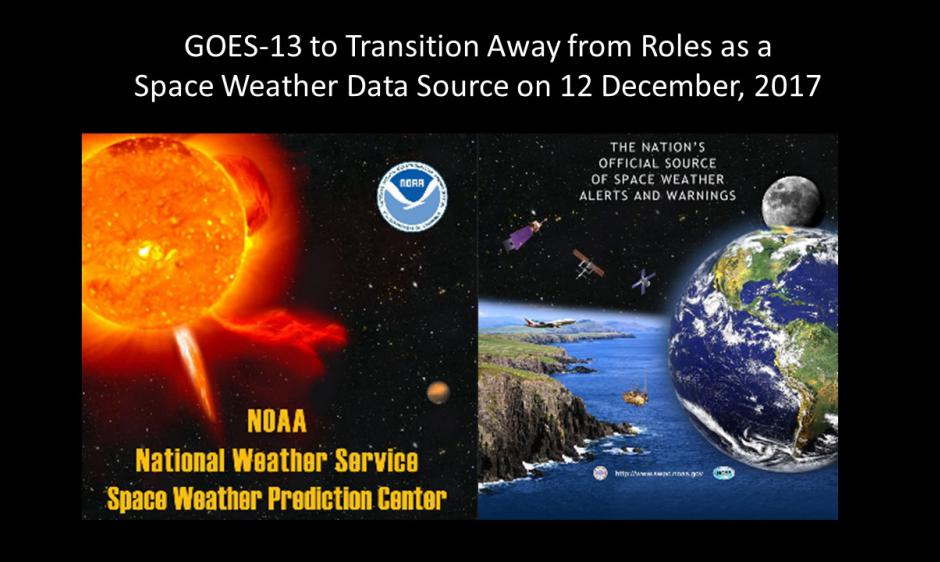
Transition Away From GOES-13 for Space Weather Data
The GOES-13 satellite will transition away from its role as a space weather data source, beginning at approximately 1630 UTC (1130 ET) on 12 December, 2017. The primary and secondary platforms for GOES space weather data will be changed exclusively to the GOES-15 and GOES-14 instruments. The new arrangements for the primary sources of GOES space weather data will be as follows:
SXI imagery will transition to GOES-14
XRS data will continue from GOES-15
Magnetometer data will switch to GOES-15
EPS (particle data) will transition to GOES-15
Users of this data should be advised there could be some intermittent data gaps or outages during the transition period - estimated to take less than 30 minutes.